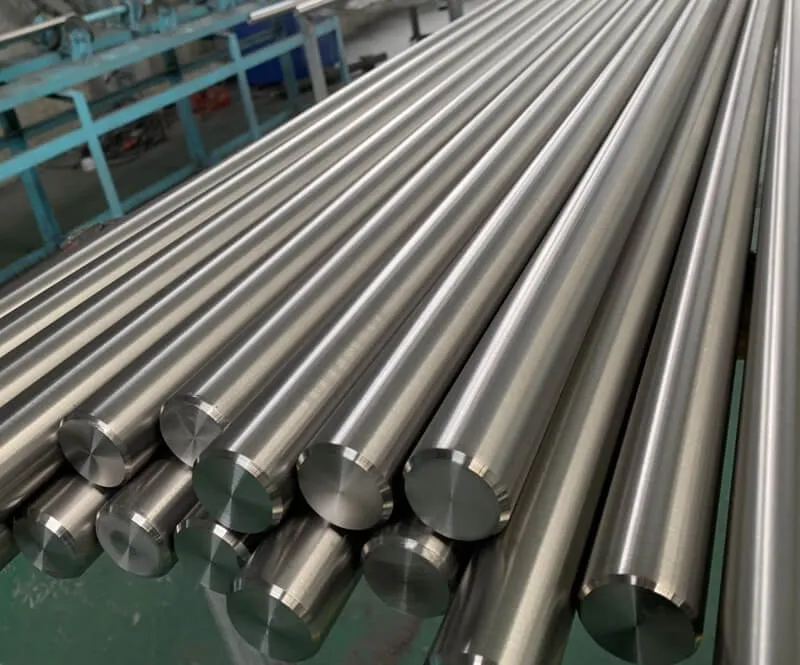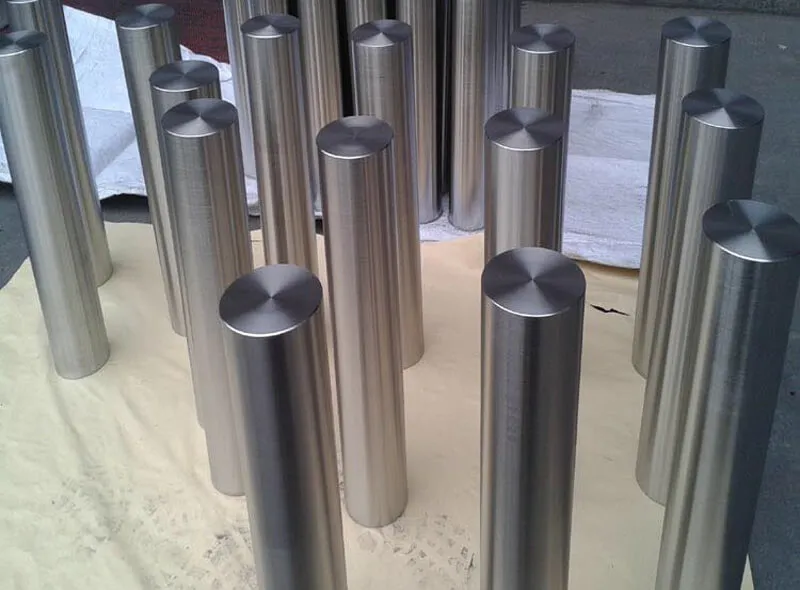
Pure titanium bars and titanium alloy bars are new structural materials. Titanium possesses unique properties such as a high melting point, low density, high specific strength, excellent toughness, fatigue resistance, resistance to acid and alkali corrosion, low thermal conductivity, excellent high and low temperature resistance, and minimal stress under rapid cooling and heating conditions. They are widely used in high-tech fields such as aerospace and aviation, and are increasingly being adopted in industries such as chemicals, petroleum, power generation, desalination, construction, and everyday consumer goods.
Titanium Bar Specifications: (diameter*length/mm): 6 mm–250 mm*L, customized
Titanium Bar Manufacturing Process: hot forging – hot rolling – annealing and straightening – turning (grinding) – polishing – end finishing – inspection – packaging
Titanium Bar Supply Conditions: hot-worked condition, annealed condition
Common Titanium Bar Grades
National standard grades: TA1, TA2, TA3, TA7, TA9, TA10, TA15, TA18, TC4, TC4ELI, TC6, TC9, TC10, TC11
American standard grades: GR1, GR2, GR3, GR5, GR7, GR12

Common standards for titanium bars:
National standards: GB/2965-2007, GB/T13810
American standards: ASTM B348, ASTM F136, ASTM F67, AMS4928
Referenced Standards
1. GB 228 Method for tensile testing of metals
2. GB/T 3620.1 Grades and chemical composition of titanium and titanium alloys
3. GB/T 3620.2 Chemical composition and permissible deviations of chemical composition for processed products of titanium and titanium alloys
4. GB 4698 Chemical analysis methods for sponge titanium, titanium, and titanium alloys
Technical Requirements for Titanium Bars
1. The chemical composition of titanium and titanium alloy bars shall comply with the provisions of GB/T 3620.1. When repeated testing is required, the permissible deviations of chemical composition shall comply with the provisions of GB/T 3620.2. TA10 (Ti-0.3Mo-0.8Ni)
2. The diameter or edge length of hot-processed bars and their permissible deviations shall comply with the relevant specifications.
3. The diameter allowable deviations for hot-processed bars that have been turned (ground) and cold-rolled or cold-drawn bars shall comply with industry regulations.
4. The out-of-roundness of hot-processed bars that have been turned (ground) shall not exceed half of their dimensional tolerance.
Applications: Aerospace, aviation, maritime, naval vessels, desalination, petroleum, chemical industry, mechanical equipment, nuclear power equipment, power equipment, automotive and motorcycle components, sports and leisure, medical components, steel and metallurgy, high tech fields.
